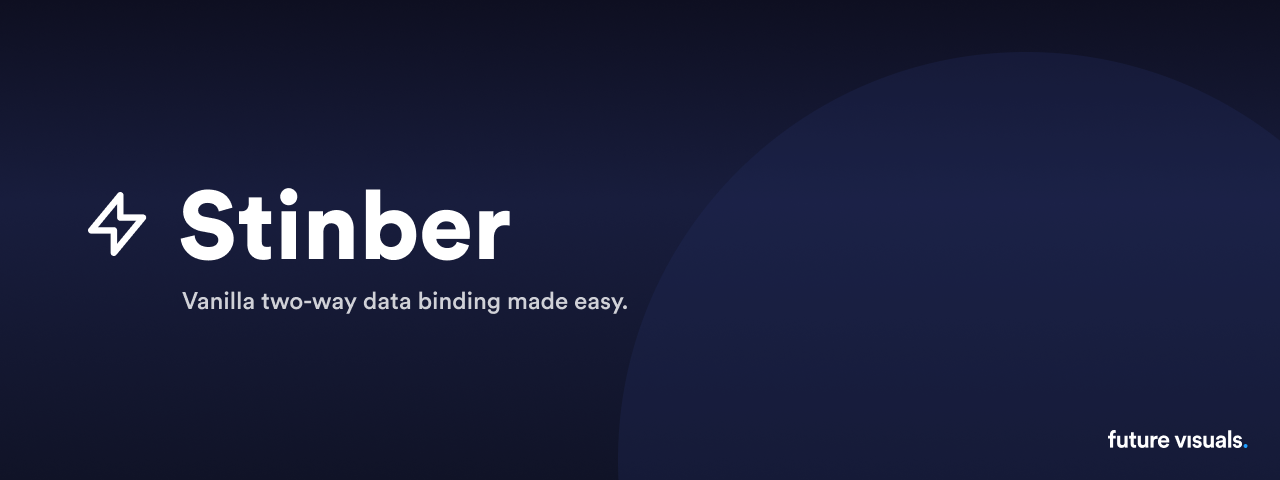@futurevisuals/stinber
v1.1.5
Published
Vanilla two-way data binding made easy.
Downloads
15
Maintainers
Readme

Stinber
Vanilla JS two-way databinding made easy! With this vanilla JS library (written in Typescript) it is easy to update the DOM based on data.
Installation
To incorporate Stinber in your project simply run:
npm install @futurevisuals/stinberUsage
You can do a lot of things with Stinber, a very simple example might look something like this.
<!-- HTML -->
<div>
<h1 data-binding="name"></h1>
<h2 data-binding="job">Initial data, will be overwritten unless you define the 'initialRender' property.</h2>
</div>
<input type="text" data-model="name" />// Javascript/Typescript
import { createState, listener } from '@futurevisuals/stinber';
const myState = createState({
name: 'Future Visuals',
job: 'Developer'
});
document.querySelector('input').addEventListener('keyup', listener.bind(myState));API reference
Stinber exports two functions which you are gonna use primarily. These function are:
createState
import { createState } from '@futurevisuals/stinber';
const myState = {
name: 'Future Visuals'
// ... more data you want to bind
}
const renderConfig = {
/**
* description: Determines if a HTML string should be rendered as string or should be parsed to the DOM. False will render it as a string.
* type: boolean
* initialValue: false
*/
allowHTML: false,
/**
* description: Sometimes when content comes out of a CMS you might not want to overwrite instantly. When set to false it doesn't render from the get go, only on change.
* type: boolean
* initialValue: true
*/
initialRender: true,
/**
* description: The `innerHTML` and `textContent` methods (which are used under the hood) doesn't receive anything else other than String (officialy). With this method you can parse values to a string.
* type: boolean
* initialValue: false
*/
stringifyValues: false
}
// The renderConfig and its properties are all optional.
createState(myState, renderConfig)listener
To really create two-way databinding you should link your data to some kind of user input. For now Stinber only support binding with the following inputs:
<input /><textarea></textarea><select></select>
You can ofcourse create your own listening event and update the state manually, however for simple usage you can use the built-in listener.
import { createState, listener } from '@futurevisuals/stinber';
const myState = createState({
name: 'Future Visuals',
});
document.querySelector('input').addEventListener('keyup', listener.bind(myState));Note: Don't forget to bind your state as in the example!
Contributing
If you experiencing bugs or like to see some feature added please create a feature request, issue or a PR on https://github.com/futurevisuals/snipsnip.
